We said goodbye to Rotarua and headed south to our next destination in Turangi. On the way we stopped at Waimangu Volcanic Valley, scene of a major explosive eruption in the 1886, a devastating geyser in 1900, and another smaller eruption in 1917. We were divided into two smaller groups for the tour: one took a hike down the valley first and then a boat ride on the crater lake. The other did the two segments in the opposite sequence.
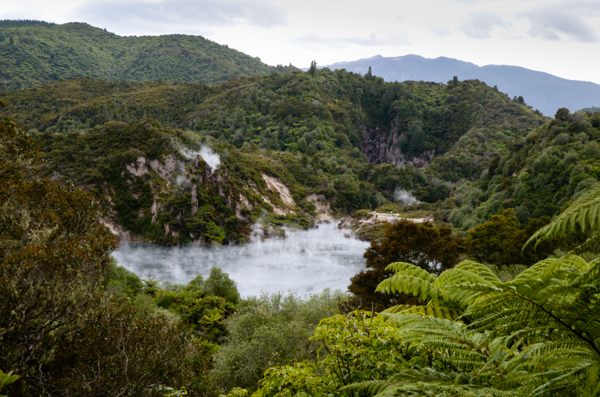
Echo Crater contains Frying Pan Lake. This was the center of a 1917 eruption that killed two people. At present, the lake is the world's largest hot spring with a temperature of 131° F.
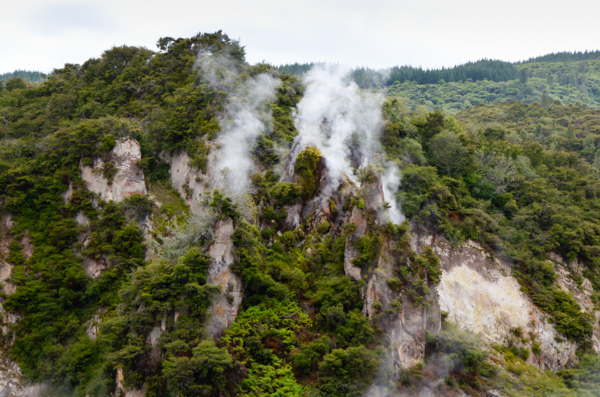
Cathedral Rocks overlooking the lake is formed of rhyolitic lava that predates the Tarawera volcano.
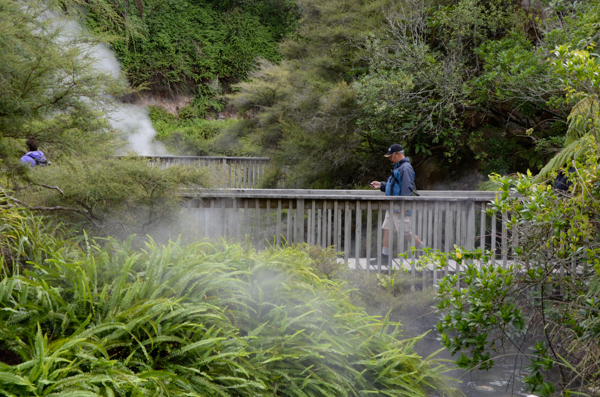
The outlet from Frying Pan Lake is Hot Water Creek. This valley was the location of the Waimangu Geyser, which erupted regularly between 1900 and 1904. Eruptions could reach over 1300 feet high and included sand, mud and rocks as well as boiling water. There are pictures at the link.
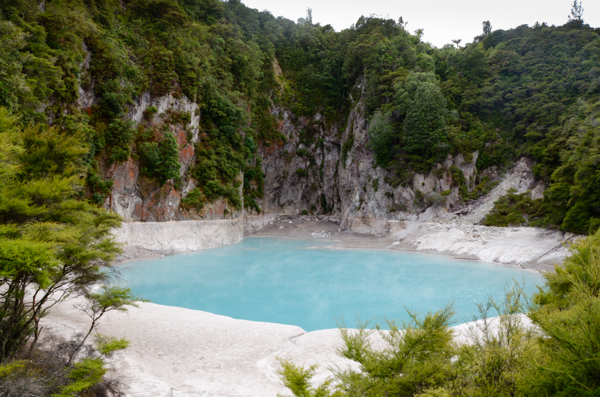
Inferno Crater Lake is actually the world's largest geyser, but the geyser is under water. The surface of the lake rises and falls depending on its activity. The maximum height of the lake is indicated by the white deposits. When it gets that high, the water, which is extremely acidic, overflows into a waterfall.
The color of the lake changes depending on where it is in the eruption cycle. The blue that we saw was breathtaking.
Tracks beside the lake were from wallabies, an introduced animal from Australia.
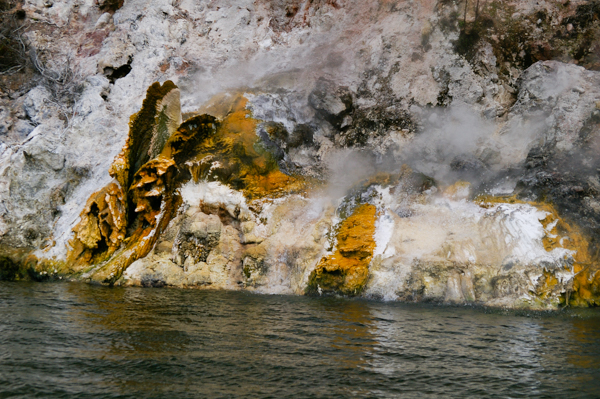
The lake cruise included visits to shoreline geysers. The yellow color is due to algae rather than sulphur. This small geyser is in the process of erupting.
The boat hung around this mini geyser to watch its eruption cycle. There is a small pool that begins to fill and overflow shortly before the geyser burbles up. It blows the excess water out of the pool and then subsides.

Further along the way to Turangi we visited Huka Falls of the Waikato River.
The rivers and many lakes in NZ were the most amazing color of blue. I never could get a satisfactory explanation in spite of asking almost everyone who talked about water. I heard several explanations -- all different.
My own best guess is that the lack of sediment or other pollution allows the water's natural color to come through.
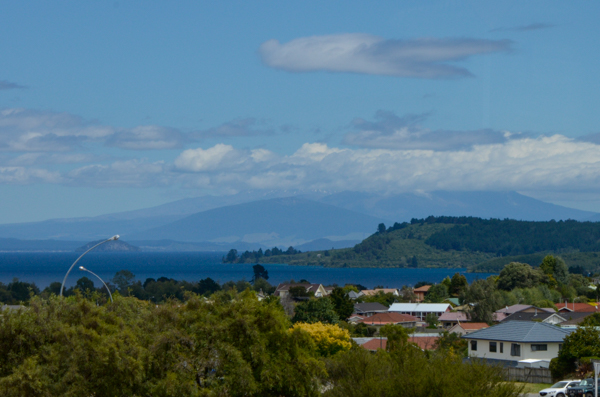
Lake Taupo, New Zealand's largest lake (by surface area), fills the caldera resulting from a supervolcanic eruption about 26K years ago.
The most recent major eruption was in the 2nd century AD and its effects were recorded in both China and Rome, although they didn't know the cause.
The mountain in the background is Mt. Ngauruhoe. Mt. Ruapehu, which we will be visiting the following day, is behind it.
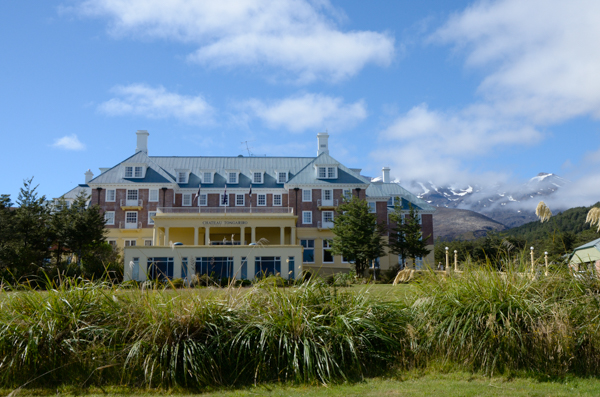
The Chateau Tongariro Hotel at Mt. Ruapehu dates from 1929. The Whakapapa Ski Field soon followed. It became a fashionable international destination resort throughout the 1930s.
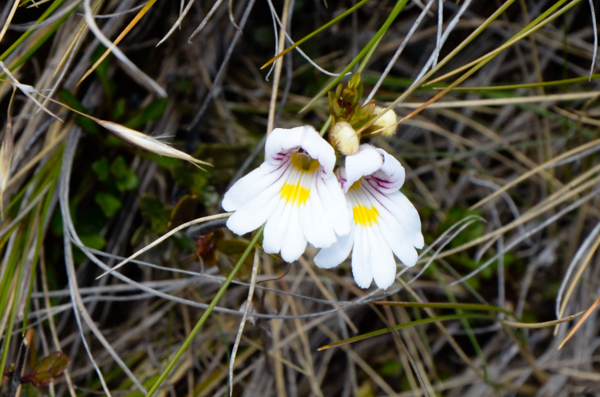
We used a couple of chair lifts to visit the ski area. Many varieties of alpine plants had begun to colonize the rocky slopes. This one is Euphrasia cuneata (Eyebright).
Click your "back" button to return.